Revealed: Jupiter’s Secret Power Source

For all its other problems, Earth is lucky. Warmed mostly by the sun, 150 million km away, shielded by a thin but protective atmosphere, the temperature at the surface averages 14 to 15 degrees Celsius-a good number to support liquid oceans and a riot of carbon-based life.
Jupiter is a different story. Its upper atmosphere (Jupiter has no solid surface) has a temperature closer to what you'd find on Venus than on some of Jupiter's own moons. As will be seen below, planetary scientists have for decades puzzled over why this planet so far from the sun is so inexplicably warm. In 2021, however, the solution to the mystery may at last have been found.

You are orbiting Jupiter, 779 million km from the sun, where physics and logic say it ought to be very, very cold. Sunlight, out here, is less than four percent as intense as it is on Earth. If solar heating were the only factor at play, the planet's upper atmosphere would average 70 degrees below zero Celsius.
Jupiter in the infrared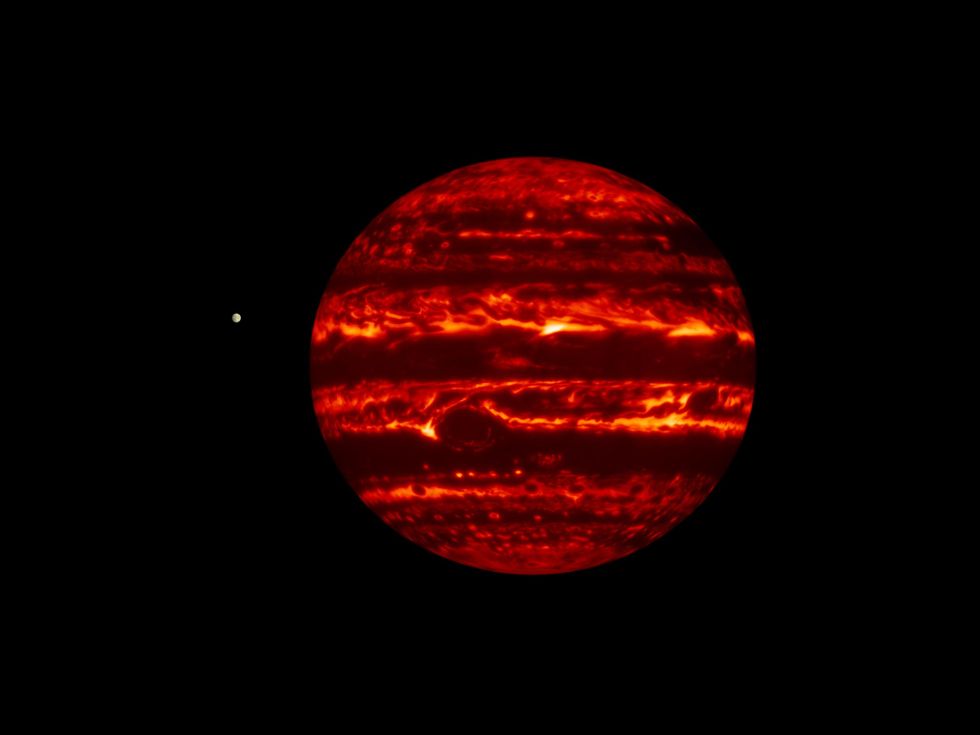
But it doesn't. It exceeds 400 Celsius-and scientists have puzzled over it for half a century. They have sometimes spoken of Jupiter as having an energy crisis." Now, an international team led by James O'Donoghue of JAXA, the Japanese space agency, says they've found an answer.
Jupiter's northern (and southern) lights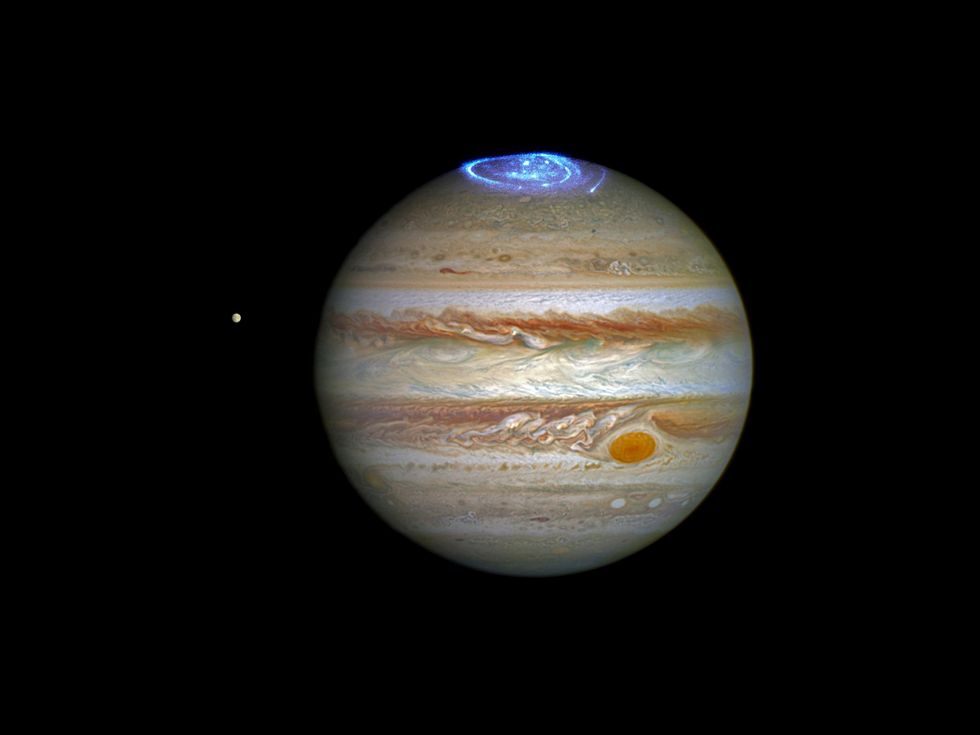
Jupiter's polar auroras are the largest and most powerful known in the solar system-and O'Donoghue says the energy in them, caused as Jupiter's atmosphere is buffeted by solar wind, is strong enough to heat the outer atmosphere of the entire planet.
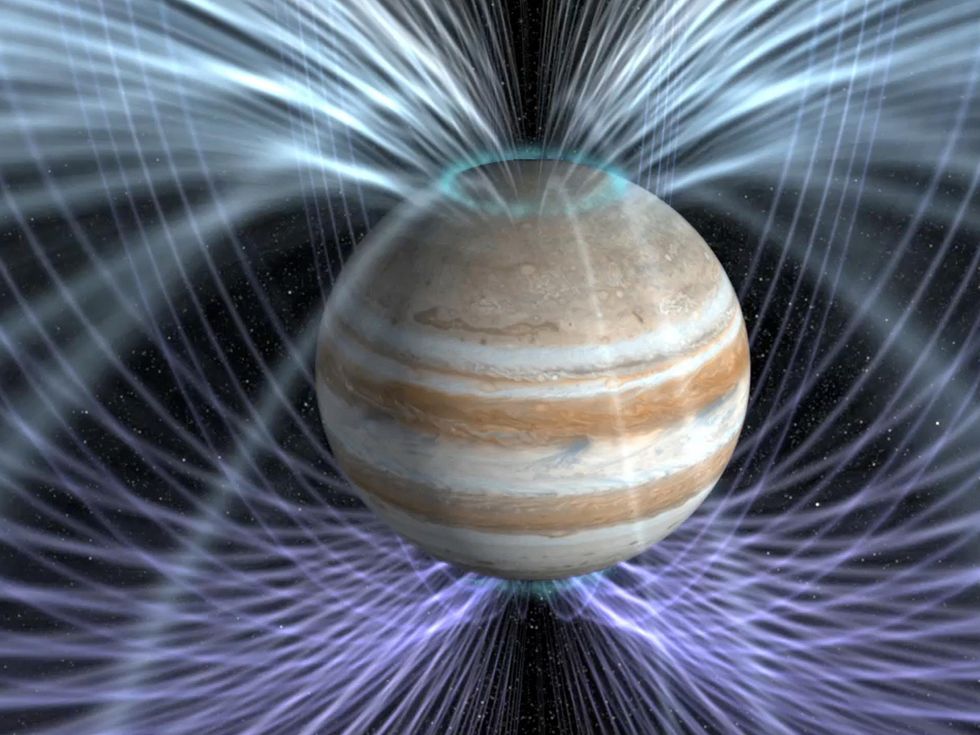
"The auroral power, delivered by the auroral mechanism, is actually 100 terawatts per hemisphere, and I always like that fact," says O'Donoghue. "I think that's something like 100,000 power stations."
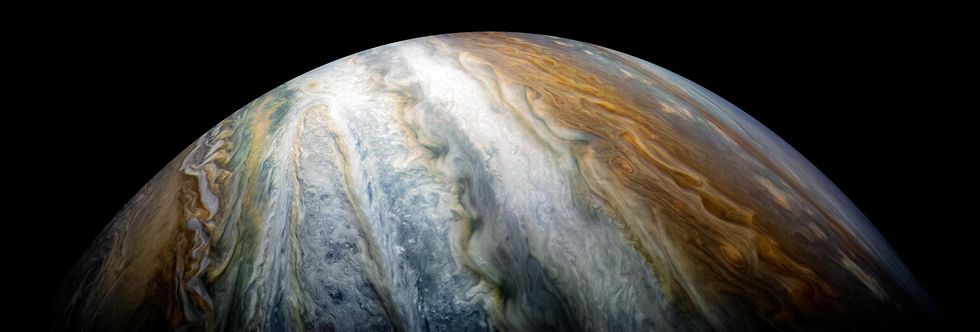
The auroras had been suspected as Jupiter's secret heat source since the 1970s. But until now, scientists thought Jupiter's giant, swirling east-west cloud bands might shear the heat away before it could spread very far from the poles. Winds in the cloud bands reach 500 km/h.
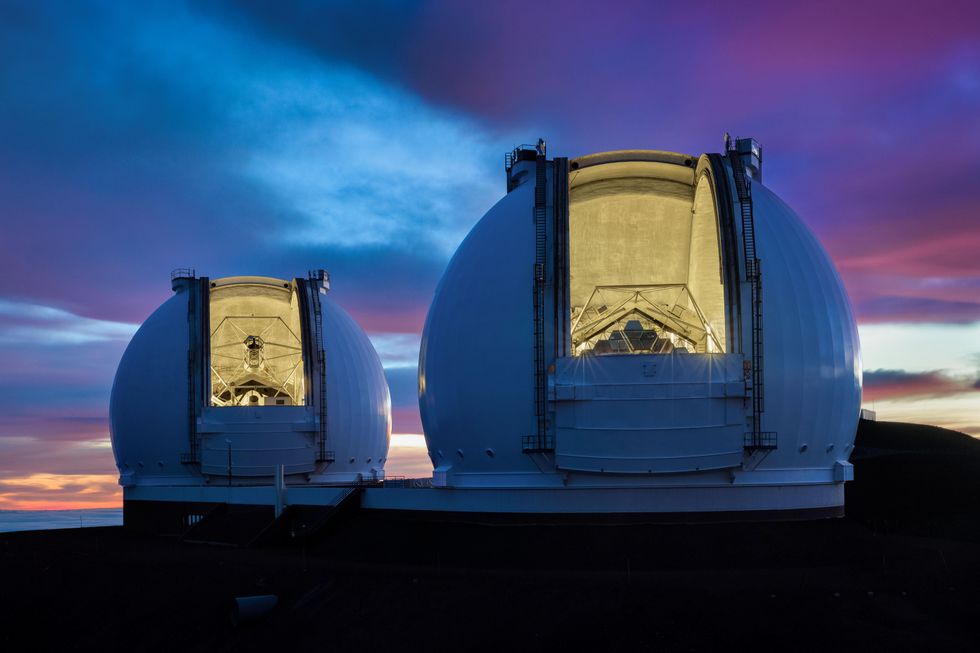
To try to solve the mystery, the research team set out to create an infrared heat map of Jupiter's atmosphere. They used the 10-meter Keck II telescope atop Mauna Kea in Hawaii, one of the five largest in the world, to take spectrographic readings of the planet on two nights: 14 April 2016 and 25 January 2017.
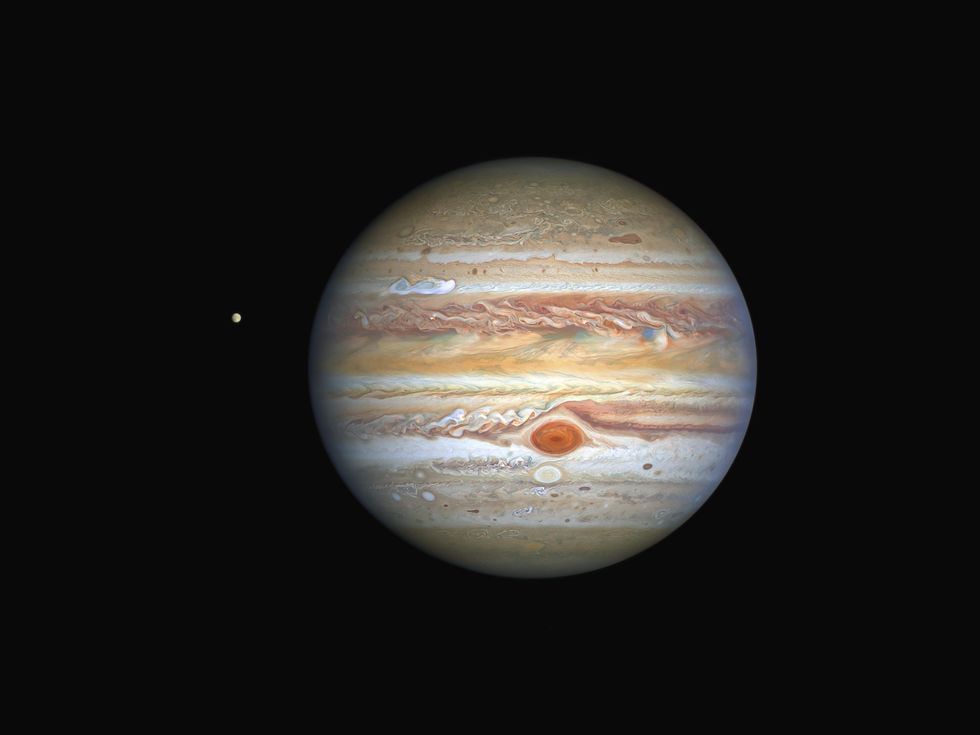
Their April 2016 heat map (to be shown next) revealed that indeed the regions around the polar auroras were hottest, and the heat did spread from there-though the effect tailed off toward Jupiter's equator...
The first night of Keck observations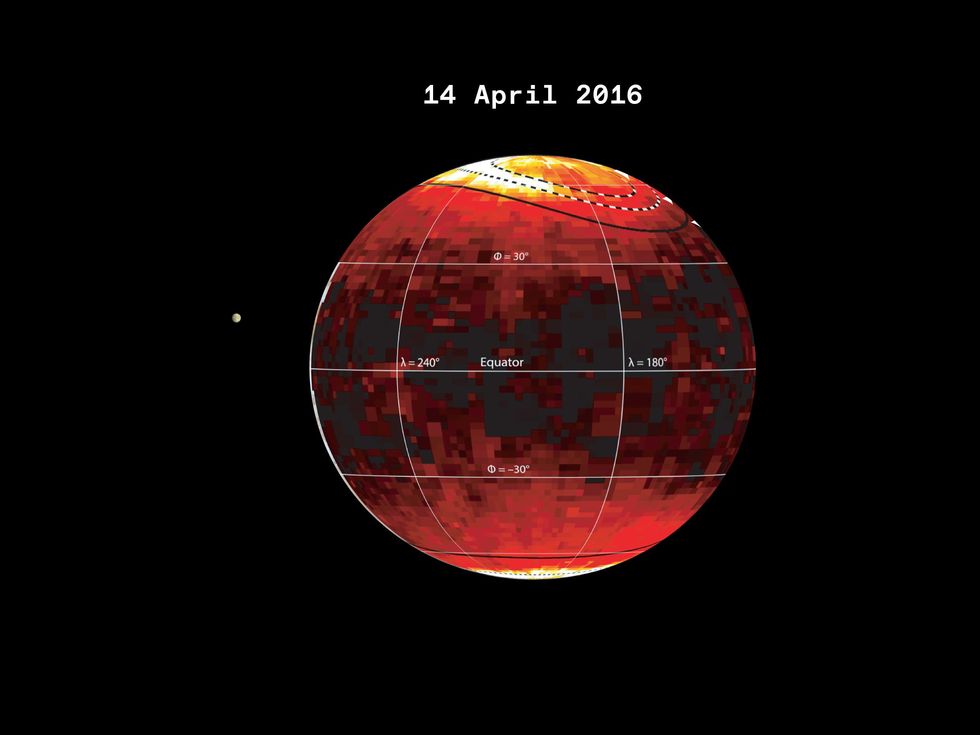
The heat was strong enough to propagate despite those powerful winds.
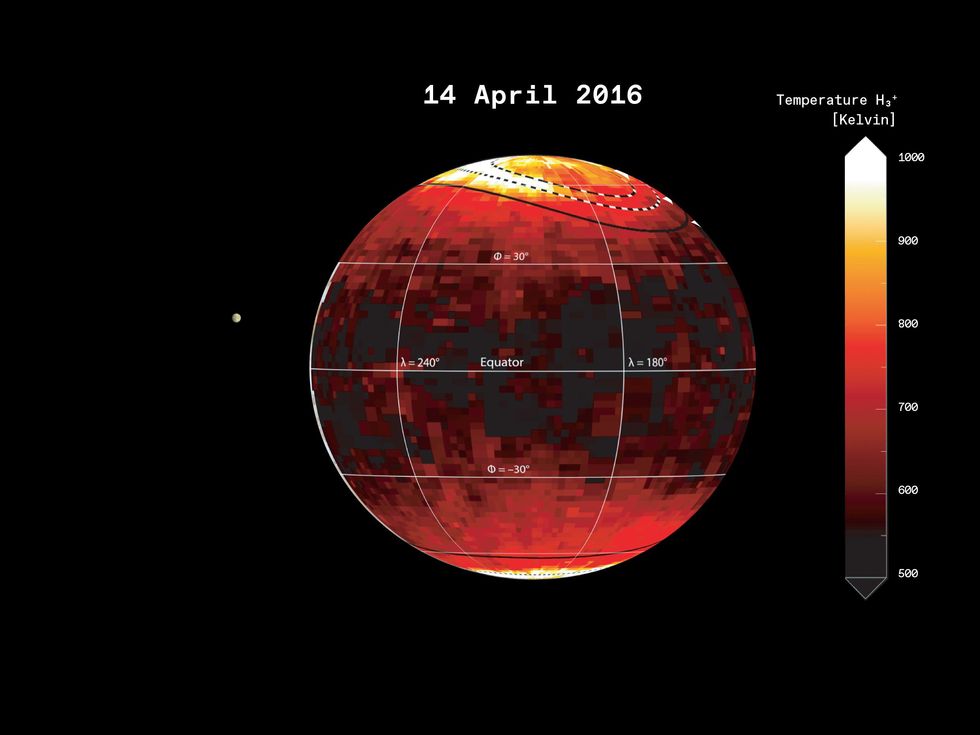
It was a promising find, but they needed more. Fortunately their next observation turned up, in O'Donoghue's words, "something spectacular."
The second night of Keck observations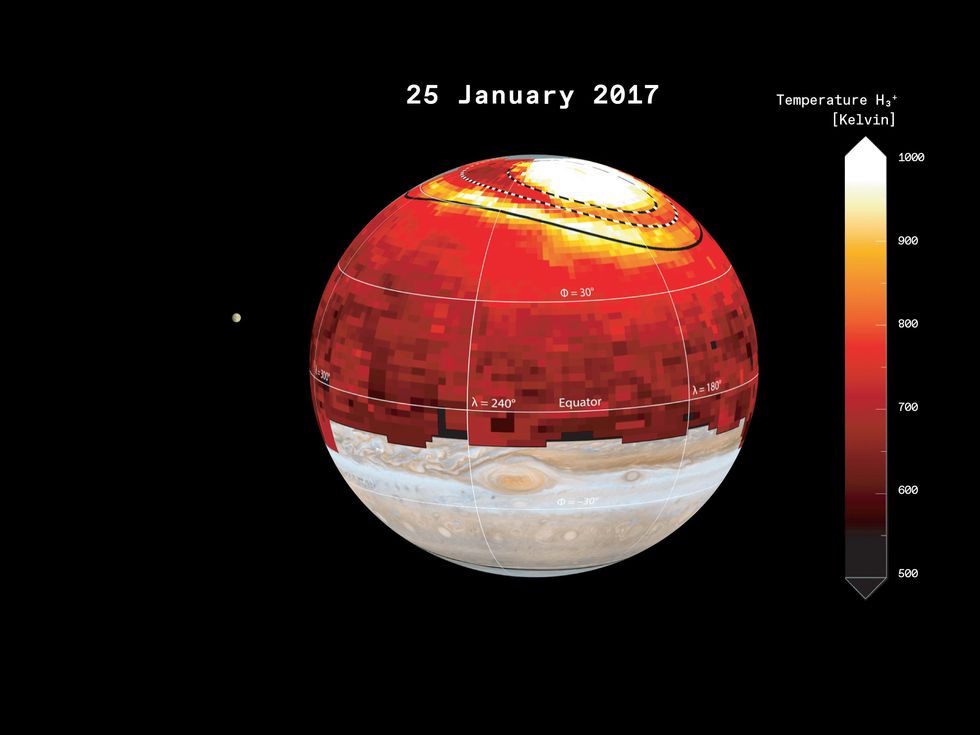
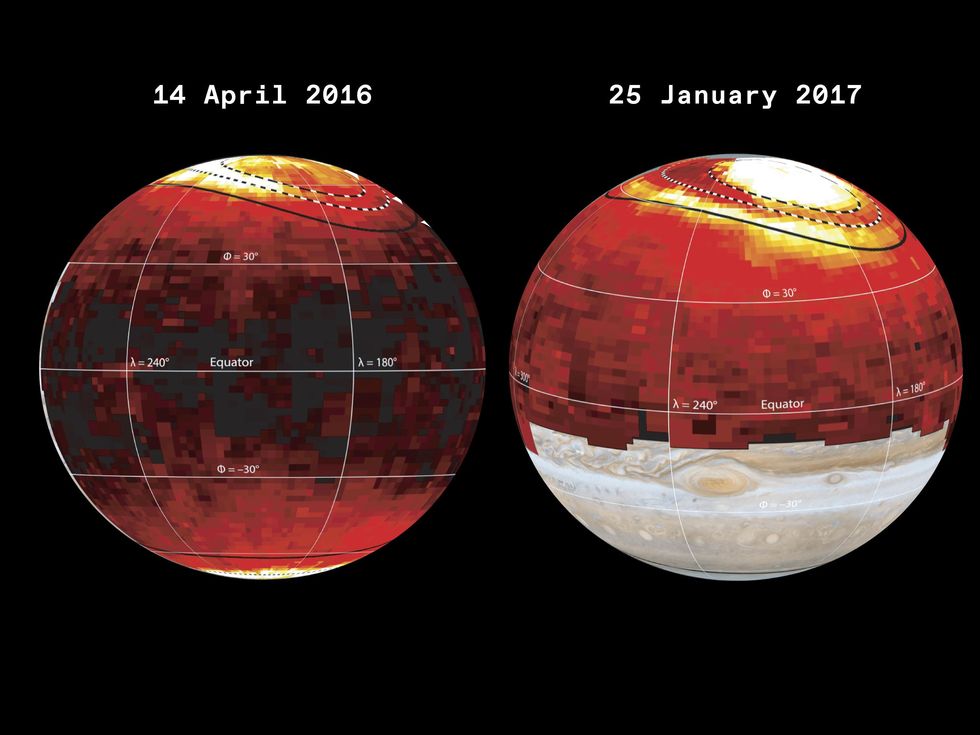
The auroras the team observed in January 2017 are about 100 degrees hotter than they were on the first night-and so are temperatures at every point from there to the equator.
The researchers soon learned that Jupiter had around the time of their January 2017 observation been hit by an outsized surge in solar wind, ionized particles which would compress Jupiter's magnetic field and make the aurora more powerful.
It was sheer luck-a happy accident," says O'Donoghue-that the surge of particles happened on their second night. Such pulses of energy probably happen every few weeks on average, but it is hard to know exactly when.
Other researchers had already tried to explain Jupiter's warmth by other means-perhaps some sort of acoustic-wave heating or convection from the planet's core, for instance-but they couldn't create convincing models that worked as well as the auroras. O'Donoghue and his colleagues worked for years on the resulting paper. They say they went through more than a dozen drafts before it was accepted for publication in the journal Nature earlier this year.
Where does this lead? It's too early to say, but scientists will want to replicate the findings and then see if they also explain the heating they see on the other gas giants in the solar system-Saturn, Uranus and Neptune. Understanding of the auroral effects may also affect our picture of Jupiter's moons, including Europa and Ganymede, which are believed to have briny oceans beneath their icy outer crusts and may be good places to look for life. But we're getting ahead of ourselves. For now, the research continues.
It's funny," says O'Donoghue, the reactions from some people in the field. Some people thought, 'Oh, yeah, we knew it was the aurora all along.' And then other people are saying, 'Are you sure it's the aurora?' It tells you there's an issue, and hopefully our observations have solved it definitively.
We once thought that it could happen, that the aurora could be the source," he says, but we showed that it does happen."
Photos, from top: A. Simon/Goddard Space Flight Center and M. H. Wong/University of California, Berkeley/OPAL/ESA/NASA; Gemini Observatory/AURA/NSF/UC Berkeley; J. Nichols/University of Leicester/ESA/NASA; JPL-Caltech/NASA; Kevin M. Gill/JPL-Caltech/SwRI/MSSS/NASA; Ethan Tweedie/W. M. Keck Observatory; A. Simon/Goddard Space Flight Center and M. H. Wong/University of California, Berkeley/OPAL/ESA/NASA; J. O'Donoghue/JAXA (heat maps) and STSCI/NASA (planet).
This article appears in the December 2021 print issue as "Jupiter's Electric Blanket."